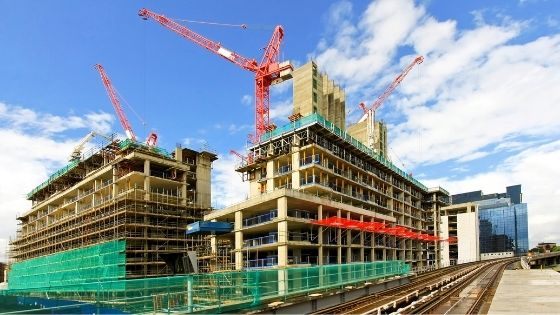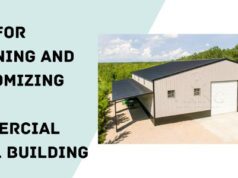Building construction is one of the most important industries in the world. It is also a very complex one, with many different players and processes involved. The industry is going through some major changes as we move into 2022, and these changes will have an impact on the way that buildings are constructed.


Rising materials costs
The cost of materials is going to be a challenge for most builders. For residential construction, it’s not as big of an issue because you don’t have to worry about the cost of steel, concrete, or lumber. But if you’re building anything commercial (such as an office building or store), rising material costs can really impact your bottom line.
But what exactly are these materials? And why are they rising? There are several factors that affect the price:
Inflation affects all types of goods, including construction materials. When there is more demand for a particular good or service than its available supply, prices rise. That’s inflation in action!
Tariffs have also been cited as one reason for rising material costs because they affect transportation costs (and thus transportation rates). If tariffs go up on steel imports from Canada due to trade disputes between the two countries—as happened recently—you’ll see higher prices on both imported and domestic products made with steel too because of this new tariff burden!
Funding constraints
Construction projects can be costly, so it’s important to have a plan in place for funding constraints. If your company has a lot of capital on hand and is able to take on debt, you may be able to fund your project without having to worry about financing. However, if you don’t have the resources at your disposal (or are not willing), then you’ll need to find creative ways of getting around these challenges.
Here are some things that will help you prepare for funding constraints:
- Research the options available. This can include finding out what type of loans or equity sources might work best with your business model and goals; if none seem feasible, consider starting an online campaign so friends and family can contribute money directly towards the project instead!
- Think outside the box when looking at alternative ways of raising funds; consider asking local businesses who might benefit from having these improvements made nearby (such as restaurants or hotels) whether there’s any way they could help support this initiative either monetarily or otherwise (e.g., donating materials).
Climate change
It seems that there is no way around this one. The weather is already changing, so you must be prepared for more storms, floods, and droughts in the future. If you’re planning a large project, consider investing in sustainable materials and building techniques that will not only reduce your carbon footprint but also help protect your investment from damage.
A shortage of skilled workers
The construction industry has been hiring workers at a record pace since 2016, but it still can’t fill all of its open positions. That’s partly because so many people left the industry during the recession and didn’t come back after it ended. And partly because many young people don’t want to do manual labor for their entire careers anymore — even if they learn how to do it well.
Regulatory barriers and requirements
It’s no secret that the construction industry is facing a difficult time. As the economy continues to expand and grow, so too does the demand for new infrastructure. This has led to an increase in project budgets, which creates a lot of pressure on contractors—particularly when it comes to regulatory compliance requirements.
The problem with regulations is that they are constantly changing, making them difficult to keep up with in real time. Furthermore, many contractors don’t have the resources necessary (or even realize) how much time or money regulation compliance will take away from their projects.
This means that if you’re planning on entering into any kind of new building contract over the next few years—even simple remodels—you’ll want to ensure you can meet all government standards before signing on anything official.
The easiest way to solve all these procedures is to have the best construction lawyers from Sydney with you. They can help you make sure everything goes according to plan.
What to do about these issues?
Before you start thinking about how to address the challenges of 2022, it’s important to have a team in place that will support you and help bring your vision to life. Your team can be made up of individuals who are skilled in design and construction, or they may consist of colleagues who are enthusiastic about your project—either way, you need people who share your vision and want to see it come true.
Use new technology
To be successful in 2022, you’ll need to use technology and innovation. You can innovate in ways that will help you overcome the labor shortage. Consider prefabrication, which is a great way to reduce costs and speed up construction. Prefabrication also makes it easier for workers to do their jobs without having to be on-site during construction.
A combination of technologies will help you address both material scarcity and labor shortage challenges:
- Use technology to substitute materials that are more readily available for hard-to-find ones like steel or cement; this will enable your team members from around the world to work together efficiently on projects that require less skilled labor than before!
Look for more material choices
There are several new materials that builders will be using in 2022. These include:
- Woodcrete – a composite material made from recycled wood and concrete that’s far more durable than regular brick or stone.
- Fibre Reinforced Polymers – these man-made polymers are stronger and easier to work with than plywood, bamboo, or other natural fibers. They can also be used as insulation between layers of walls to reduce heat loss in winter and heat gain in summer (which means you’ll need less air conditioning).
- Polyurethane Foam Insulation – this type of foam is ideal for insulating the inside of walls because it doesn’t require vacuuming after installation; instead, it expands into the cracks between studs so there’s no space left open for cold air infiltration! This makes polyurethane an exceptionally efficient way to seal up your home while maintaining its overall energy efficiency levels over time as well!
We wish you a lot of business success!









